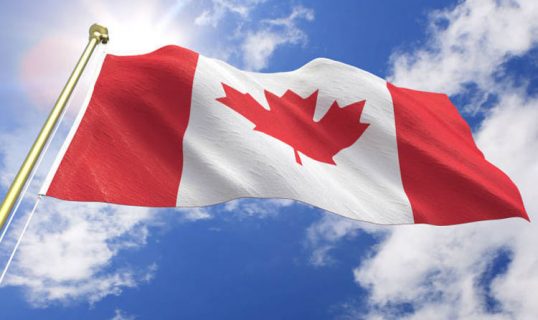I will be celebrating Canada Day because I love Canada. We’re a work in progress and know it.
May 31, 2021

The history of Canada is not one long march of oppression. #celebrateCanadaDay
By Maureen McCabe
Canada is a country that is working to understand its mistakes and trying to address them. That’s the Canada I know and love. I’m proud to be Canadian.
Tasha Kheiriddin, National Post journalist, June 8, 2021, The push to #cancelCanadaDay misunderstands that our flawed nation is still worth celebrating.
Cancellation does not beget reconciliation. It drives underground the very feelings of division it seeks to destroy, instead of exposing them to the light of day.
My country, Canada, stands for freedom, equality and opportunity. These values are enshrined in our Charter of Rights and Freedoms, and in the best of our history.
I’m proud to be Canadian. I’m a 6th-generation Irish Canadian; the McCabes arrived in 1847, and I’m a 10th-generation French Canadian. My mom’s family, the Papineau, arrived in 1694.
6th-generation Irish Canadian
In grade 4, when I was working on the family tree project, I visited my Grandma McCabe (nee Walsh), who told me stories about her family that she had never shared with my father or uncles. My mother was aghast to learn that there were cousins who had married on the boat. Apparently, this wasn’t uncommon.
Our short family history: During the Irish Potato Famine, also known as the Great Hunger, the McCabes departed County Cork and journeyed across the Atlantic, arriving at Grosse Île, the ‘big island’ located in the St. Lawrence River.
- Many had contracted typhus during the voyage, some of whom died on the ship, and according to Grandma, no one was buried at sea.
- It’s estimated that over 3,000 Irish people died on the island and that 7,553 immigrants are buried in one of the three cemeteries on the island, which is relatively small, 2.9 km long and 1 km wide.
- Grosse Île is the second-largest Irish cemetery outside of Ireland.
-
In recognition of its importance in the history of immigration to Canada, and especially of the immigration experience of Canadians of Irish origin, the Grosse Île site has been officially known since 1996 as Grosse Île and the Irish Memorial National Historic Site.
- Aside, the federal government continues to refer to Grosse Île as the Quarantine Station because it was a quarantine station for the port of Quebec, which was the principal gateway to Canada for immigrants until World War I.
The McCabes settled in Douglastown, Gaspé, which was one of the few English-speaking communities in Quebec. They were farmers, and the land and farm were sold in the late 1960s.
I’m proud to be Canadian.
10th generation French Canadian, my mom’s family name is Papineau.
The family tree was researched by my Aunt Mary-Anne Papineau (nee Carney), who was married to my mom’s elder brother. Aside from that, I only mention her maiden name because it wasn’t typical for the French and Irish to marry in the 1950s. When my uncle and mom married Irish Canadians, the relatives called it a ‘mixed marriage.’
Born in 1670, Samuel Papineau came to Canada in 1695 as a soldier in the company of M. Charles Henry D’Aloigny, Marquis de la Grois.
In 1693, Catherine Quevillon and one of her sisters, Françoise Amelia, were taken hostage by the Iroquois at the Massacre of Lacheneye, which was part of the beaver wars. She saw the Iroquois kill her sister. After the Peace Treaty of 1701, Catherine was returned to the French, specifically to New France.
On June 16, 1704, Samuel married Catherine Quevillon, an 18-year-old widow. They had nine children, three girls and six boys. For the time, Samuel lived a very long and full life and died on April 23, 1737, at age 67. (Aside, Catherine was widowed four times.)
I’m proud to be Canadian.
Learn about our history. There were 39 nations that sent 1,300 delegates from the east of the Maritimes to present-day Illinois in the west to negotiate the Peace Treaty in Montreal.
Canada Day can be a powerful way to educate Canadians about our strengths, historical challenges and opportunities for awareness and growth.
The Indigenous peoples
As Canadians reflect on the tragedies brought forward by residential schools and honour the Indigenous children whose lives were taken, I will wear an orange shirt on Canada Day.
Tasha Kheiriddin, National Post
This July 1, we are all free to observe Canada Day, or not, in the manner of our choosing. It can be a day of celebration, of hope, of thanks, of family. It can be a moment of reflection, of remembrance, of sorrow. It can be a vow to take the best of the past and move forward into the future. It can be a day of reconciliation. But one thing it should not be, is cancelled.
Canada is a country that is working to understand its mistakes and trying to address them. That’s the Canada I know and love.
I’m proud to be Canadian. Join me to #celebrateCanadaDay #CanadaDay
Check out my July 2020 Canada Day blog.

Marketing Companies Toronto | Marketing Agency Toronto
- Marketing Services
- What We Do
- 10-hour Starter Package
- Marketing Strategy
- Marketing Plan
- Attract & Keep Customers
- Website Marketing
- Promotional Marketing & Ads
- Online Video Marketing
- Branding
- Marketing Materials
- Marketing Tools
- Why Choose Us
- Maureen McCabe, Small Business Marketing Consultant
- Small business marketing Toronto
- Help You Grow
- Video Gallery
- Marketing Fees
 Free Consultation
Free Consultation Marketing Check-up
Marketing Check-up Free Marketing Report
Free Marketing Report Free SEO Template
Free SEO Template Make An Inquiry
Make An Inquiry



